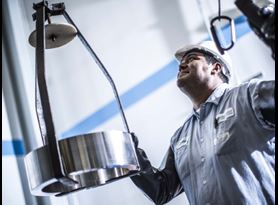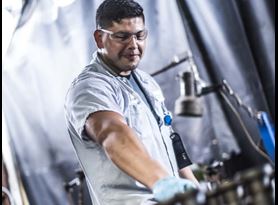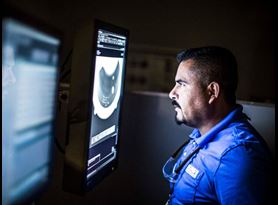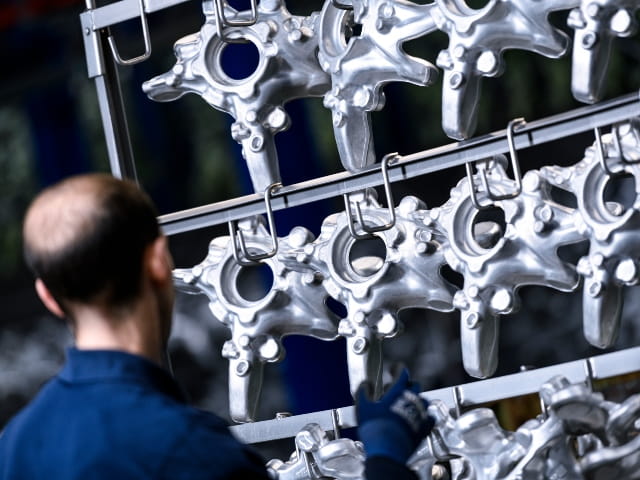Keeping People, the Environment, and Assets Safe with Non-Destructive Testing (NDT)
Non-destructive testing (NDT) is critical to ensure the infrastructure and assets that we use daily remain safe. Performing tests such as Digital Radiography, Conventional Radiographic Testing (RT), Liquid Penetrant Inspection (LPI), Magnetic Particle Inspection (MPI), Ultrasonic Testing (UT), and Visual Inspection give assurance that the products and materials we use are fit-for-purpose.
NDT is essential for quality assurance; appropriate testing methods are used to gather information on a material without damaging it. It is critical for ensuring buildings, bridges, trains, power stations, and the infrastructure that each of us come into contact with regularly are reliable and perform as expected.
Some of the world's recent disasters could have been avoided if the proper NDT testing techniques were performed:
Samsø turbine collapse
On November 28, 2015, the nacelle, hub, and blades of a wind turbine collapsed into the sea. The findings indicate a fracture in the weld connecting the tower top flange with the tower. The crack then developed over time, leading to a separation of the top of the tower.
The welding at the time of installation was made according to the industry welding standards of 2002. In many cases, non-destructive testing follows these standards and is the final operation conducted on a product to ensure it fits its designed purpose. The test method utilized is geared to interrogate the part for discontinuities in accordance with the controlling specifications and standards.
In the case of the turbine collapse, these standards have been subsequently changed, and there have been no further cases of this occurring.
Metal Fatigue on Boeing 777: Denver
One of the fan blades on the Boeing 777 that failed shortly after take-off showed signs of metal fatigue on the Denver plane engine. This is likely to have been due to improper NDT inspection on the fan blade. Once the aircraft was in operation, maintenance, including Eddy Current Testing, Ultrasonic Testing, and Magnetic Particle Inspection, should be used on a routine basis to identify any signs of fatigue cracking and avoid failure in service.
It is essential to include NDT testing during the component's life-cycle to assist with in-service fatigue issues and investigations.
Although these are some of the more publicized disasters, most of the time, NDT works as expected to avoid these failures occurring in the first place. It is vital to perform NDT testing throughout the product life-cycle to ensure your products and equipment remain safe.
The Element advantage
Element provides a full range of non-destructive testing (NDT) across our multiple labs and geographies to give you the assurance and peace of mind that your materials, products, and systems remain safe. We offer fast and flexible testing following the relevant standards, and our experts can also assist with consultancy and advice for existing procedures or in-service failures.
Our NDT facilities hold a wide range of national, international, and prime based accreditations, which include:
- PRI NADCAP: MT, PT & RT Aerospace Quality Systems and CP(Passivation)
- UKAS EN 17025: MT, PT, RT, UT, VT
- Rolls Royce: MT, PT & RT
- BAE MT, PT, RT, UT
- Leonardo, formerly Agusta Westlands: MT, PT, RT
- Collins Aerospace, formerly Goodrich (UTC) and Moog (formerly GE): MT, PT, RT & CP
- Sikorsky: PT
- SAFRAN : RT
- Boeing: Specific UT approval for wing flap wind out diaphragm EB weld test
For more information on our non-destructive testing services, contact our experts today.
Find related Resources
Related Services

Ultrasonic Testing (UT)
Our inspectors use ultrasonic waveforms to pass through a material to detect flaws and provide a complete volumetric inspection. Contact testing, Phased Array and the Immersion technique are available for complex geometric parts that otherwise may not be subject to complete volumetric inspection.

Magnetic Particle Inspection
Find out more about magnetic particle inspection, sometimes called MT, MPI, or mag particle, a nondestructive test method used to check for surface and sub-surface discontinuities and defects.

Weld Testing
Our team includes Certified Welding Inspectors (CWI), Certified Welding Engineers (CWEng), and industry-dedicated technical staff to assist with projects across sectors and applications.

Non-Destructive Testing (NDT)
Element's NDT services comply with a wide variety of industry standards, government contracts, military specifications and unique customer requirements.
